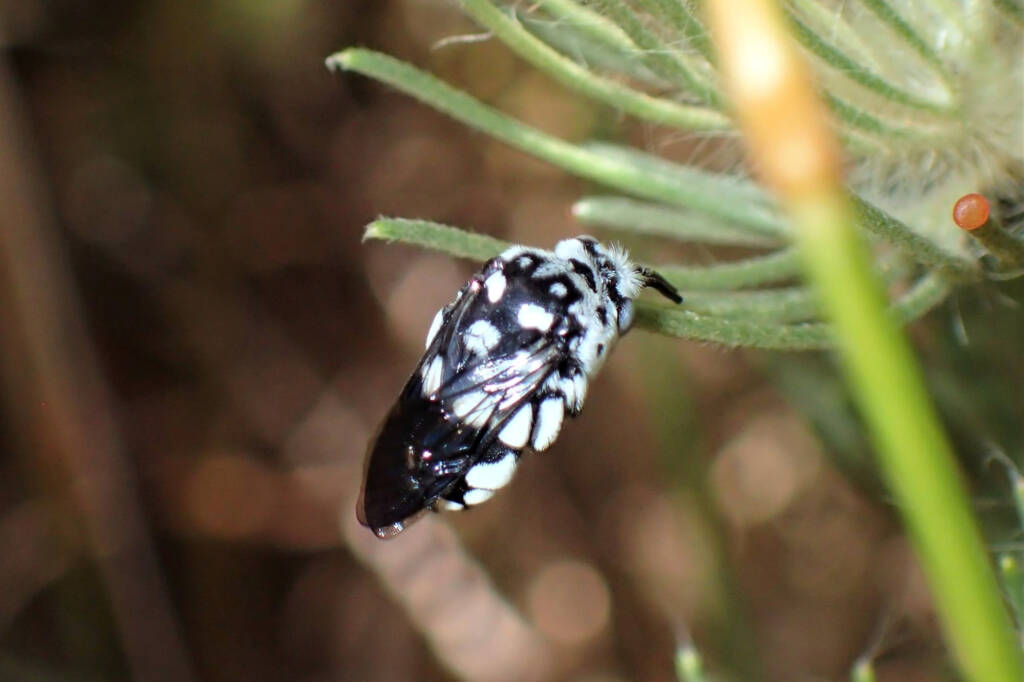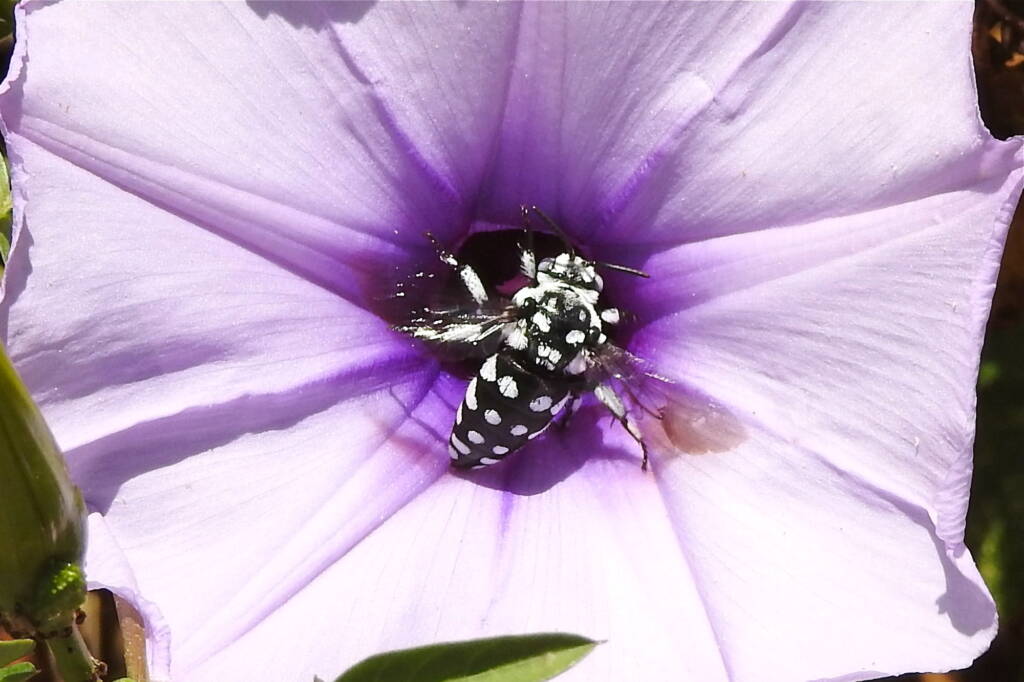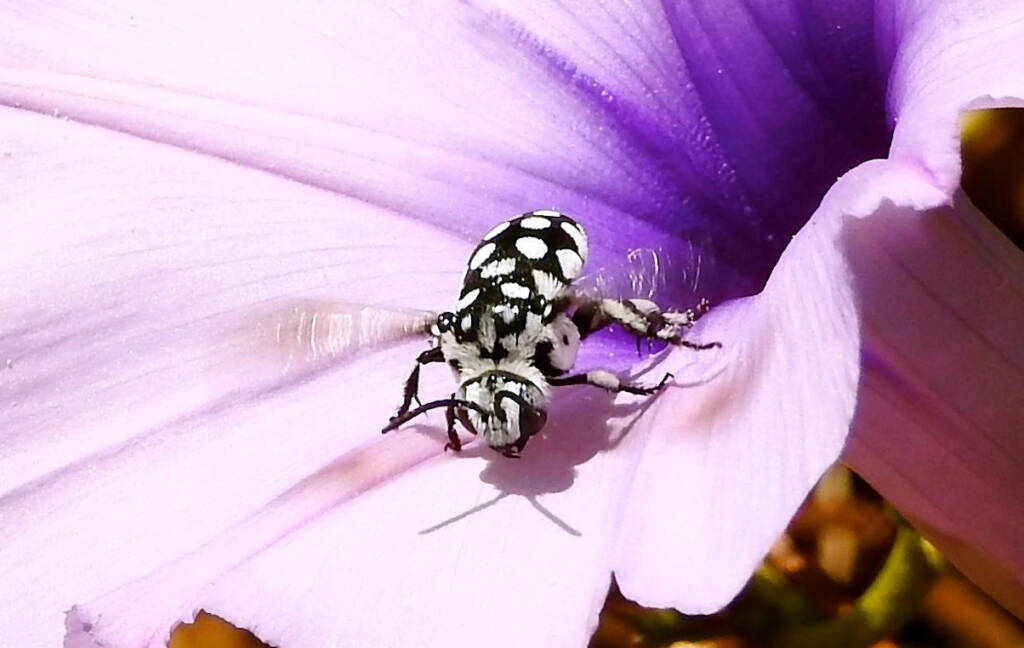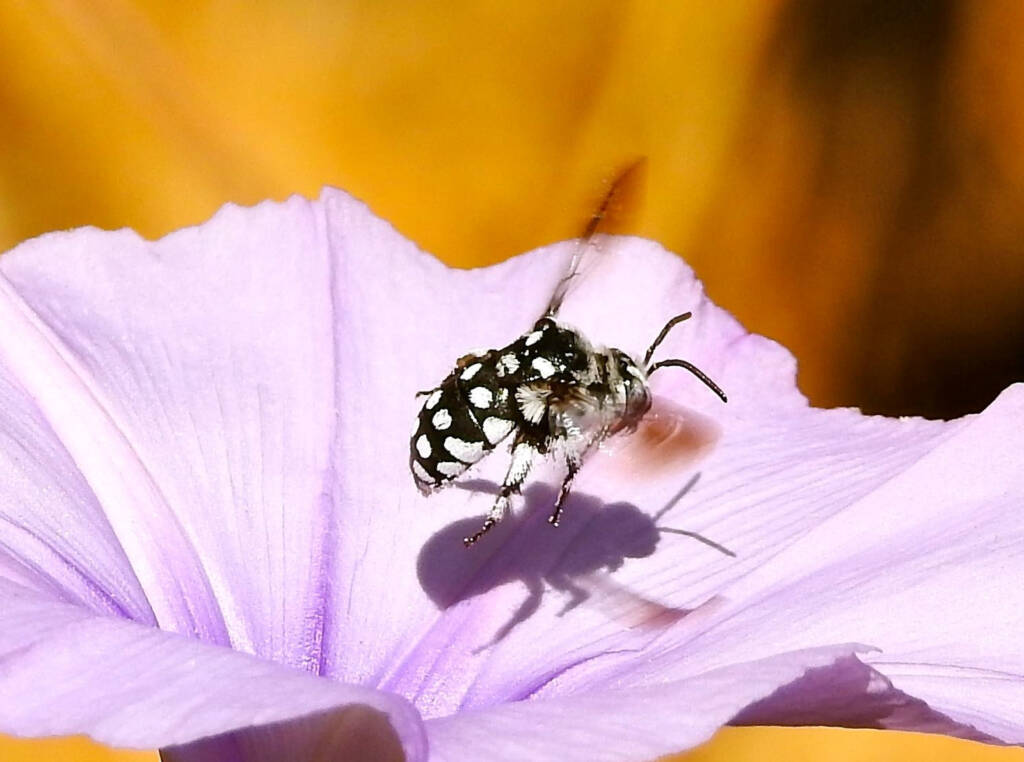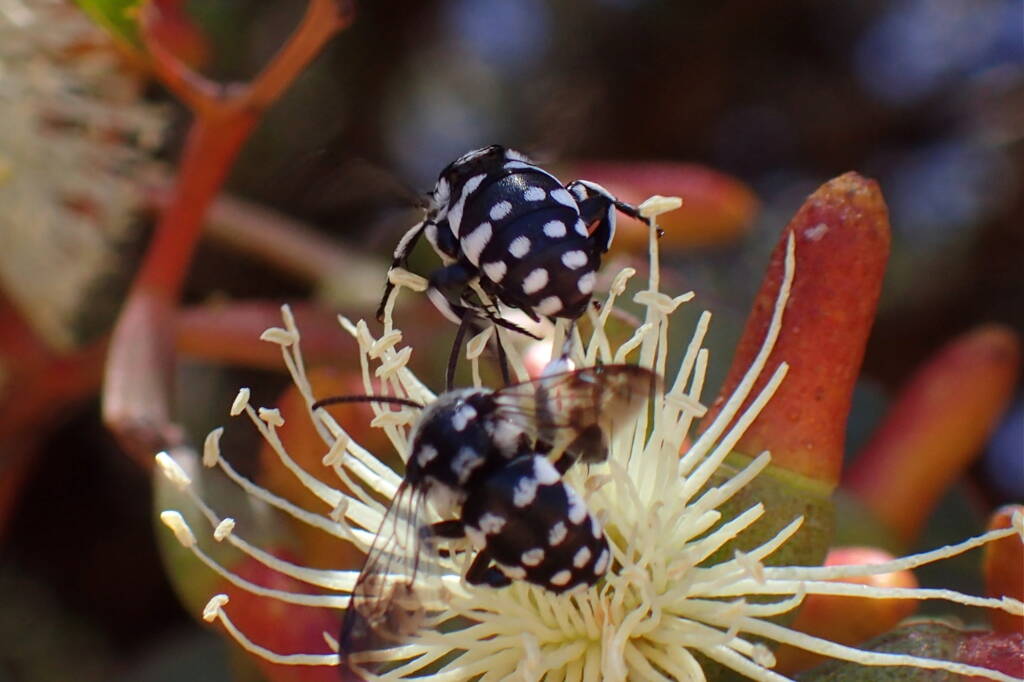ThyreusThyreus caeruleopunctatus Thyreus waroonensis
Contributor & Author Gary Taylor ◦
The Waroona Cuckoo Bee (Thyreus waroonensis) is a striking and different looking native bee. It could be a bee straight off the catwalks of Paris and Milan, when fashion was all about black and white.
The Waroona Cuckoo Bee has been sighted across mainland Australia, except for Tasmania. More unusally they are also known as the Waroon Cloak-and-dagger Bee. They are sometimes incorrectly called the Domino Cuckoo Bee, which refers to a different species Thyreus lugubris.

Belonging to the family Apidae, genus Thyreus , cuckoo bees lay their eggs in the nests of specific bee species. In the case of the Waroona Cuckoo Bee, they lay their eggs in the nests of blue-banded bees and the teddy-bear bees. The cuckoo bee’s egg hatches first and eats the provisions laid down by the nest builder.
Another common sight on the Morning Glory vine that has taken over at my place (hey, it’s green, it flowers profusely, the bees love it…) Thyreus waroonensis, or (rather unimaginatively) the Waroona Cuckoo bee.
For those that weren’t aware, like her “common” name suggests she doesn’t make her own nest, she cheats and lays her eggs in Amegilla nests instead. Not ideal for the baby Amegilla, but from what I’ve seen over many years of watching them, they barely make a dent in the Amegilla population and even then that dent is only filled with another just as (I think more so 😀) beautiful bee… 🙂
Author Gary Taylor, Geraldton, Midwest WA
Another gorgeous little native that loves the Eucalyptus platypus, Thyreus waroonensis, the Waroona Cuckoo bee. They’re not collecting pollen, they’ve just popped in for a bit of a feed, a slurp of nectar (check out the length of the tongue in the second pic), ‘cos as the name “cuckoo” suggests, she doesn’t make her own nest, she lays her eggs in other bees nests, favouring Amegilla (Blue banded bees and Teddy bear bees) as hosts. Which is a bit sad for the little Teddy bears, but I still reckon they’re gorgeous, and she looks just as soft and cuddly as any Teddy bear to me 🙂
Author Gary Taylor, Geraldton, Midwest WA
Check out our blogs:
- Beauty is in the eye of the bee holder
- sleeping Waroona cuckoo bee… under the Woolly Bush
- The bee most likely to fall out of bed…
- Scientific classification
- Kingdom: Animalia
- Phylum: Arthropoda
- Class: Insecta
- Order: Hymenoptera
- Family: Apidae
- Tribe: Melectini
- Genus: Thyreus
- Species: Thyreus waroonensis

Footnote & References
- Thyreus waroonensis, Waroona Cuckoo Bee, Images and content contribution by Gary Taylor, Western Australia
- Thyreus waroonensis, Friends of Queens Park Bushland, https://www.friendsofqueensparkbushland.org.au/bee-3/
ThyreusThyreus caeruleopunctatus Thyreus waroonensis
BeesBees Anatomy Bee Behaviour Blogging Bees… Bees – image index Amegilla Bee Apis mellifera Austroplebeia australis Austrothurgus Braunsapis sp Ceylalictus perditellus Colletidae Euryglossinae Exoneura Homalictus Hyleoides bivulnerata Lasioglossum Lasioglossum (Chilalictus) Lipotriches Megachile Meroglossa Stenotritidae Tetragonula Thyreus Xylocopa




